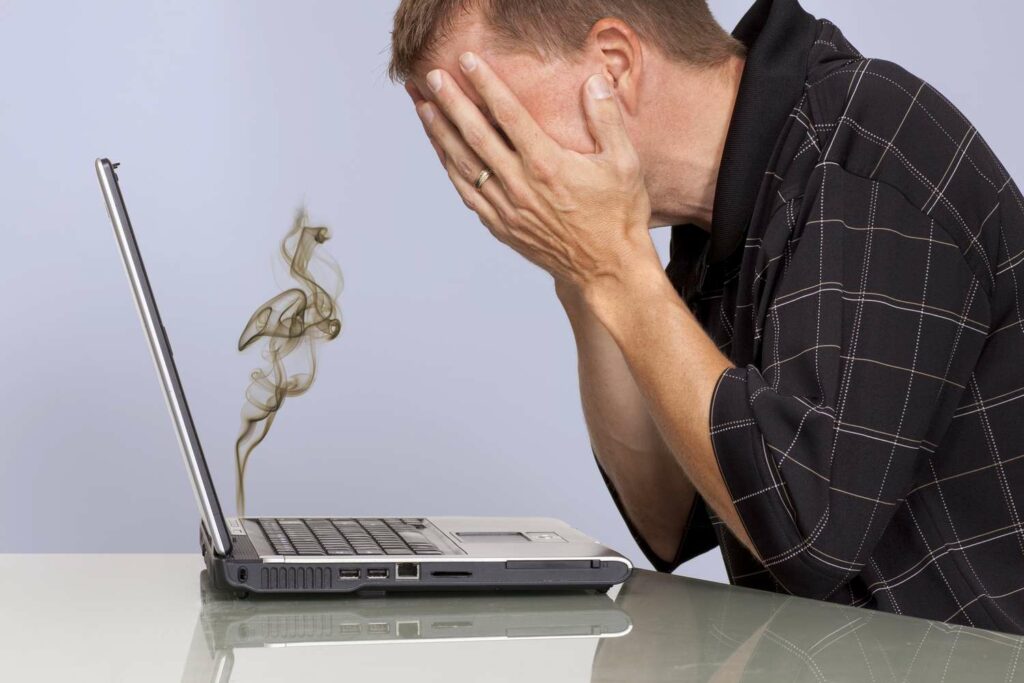Decoding Laptop Overheating: A Comprehensive Guide to Ensure Optimal Performance

Investing in a top-notch laptop usually guarantees a smooth performance for the first few years, but what happens when your once-reliable device starts feeling like a portable space heater? This comprehensive guide dives deep into the intricacies of laptop overheating, offering insights, troubleshooting tips, and practical solutions to transform your overheating laptop into a high-performance computing powerhouse.
I. Unraveling the Overheating Dilemma
A. The Unseen Culprit
Owning multiple laptops over the years, the recurring stress of dealing with overheating issues prompted a closer examination. The journey began with the realization that not every performance hiccup is rooted in excessive heat. Understanding the underlying problems is crucial before diving into solutions.
B. Identifying the Red Flags
Most laptop users initiate troubleshooting when faced with either poor performance and frequent crashes or when the laptop’s temperature becomes uncomfortably high. However, it’s essential to differentiate between expected warmth and overheating, considering the compact design of these devices.
C. Monitoring CPU Temperatures
To accurately diagnose an overheating problem, monitoring CPU temperatures becomes paramount. Utilizing tools like HWMonitor allows users to track key metrics, including voltages and fan speeds. This step is instrumental in gauging the severity of the issue and deciding on the appropriate course of action.
II. The Anatomy of Laptop Overheating
A. The Role of Cooling Pads
Early encounters with overheating led to hasty purchases of cooling pads, only to discover that not all overheating issues stem from external factors. Understanding whether the laptop’s vents function as intake or exhaust is crucial in determining the effectiveness of cooling pads.
B. Breaking the “Lap” in Laptop
Taking the term “laptop” too literally can exacerbate overheating problems. Laptops thrive in well-ventilated environments, and placing them on flat, hard surfaces promotes optimal airflow. Elevating the laptop with makeshift solutions like cardboard or a stable laptop stand enhances passive cooling.
C. Cooling Pad Considerations
Investing in a suitable cooling pad is a game-changer. Factors like the laptop’s vent orientation, size compatibility, and fan adjustability play pivotal roles. The guide emphasizes the significance of aligning the cooling pad with the laptop’s specific model to ensure optimal heat dissipation.
III. Thorough Maintenance for Optimal Cooling
A. Cleaning Rituals
Routine cleaning is a neglected yet impactful aspect of laptop maintenance. Beyond external cleaning, delving into internal components by opening up the laptop yields significant benefits. Comprehensive cleaning, including fans and exhaust ports, can result in temperature reductions of 10 degrees Celsius or more.
B. The Art of Thermal Paste Application
For enthusiasts willing to venture into advanced maintenance, reapplying thermal paste can further enhance cooling efficiency. The guide outlines a step-by-step process for safely opening the laptop, cleaning components, and applying high-quality thermal paste.
C. Balancing Warranty and DIY Repairs
The guide issues a cautionary note regarding potential warranty voiding due to self-repairs. While self-repairs are cost-effective and relatively simple, users are advised to tread carefully and consider professional repair services if unsure.
IV. Beyond Hardware: Software and Workload Considerations
A. Power Plans and Performance
Optimizing power plans, transitioning from balanced to high performance, or vice versa, can impact laptop performance. Striking a balance between performance and battery life is crucial, especially for users experiencing heat-related issues.
B. Driver Updates for Stability
Keeping drivers up to date is emphasized as a crucial step to address random crashes or drops in frame rates. However, caution is advised against beta drivers, ensuring a stable and reliable computing environment.
C. Workload Management
Understanding the limitations of a laptop, especially budget models, is essential. Resource-intensive tasks like gaming or video editing may push the device beyond its capabilities. Strategic workload management, background process shutdowns, and judicious program usage are recommended.
V. Acceptance and Future Considerations
A. Acknowledging Inherent Heating
The guide concludes by acknowledging that some laptops inherently run hot, necessitating compromises between performance and reliability. Users with newer laptops experiencing overheating are encouraged to leverage warranties and seek professional evaluation.
B. Retiring Gracefully
For aging laptops, the guide advocates tempering performance expectations, toning down settings, and possibly undervolting the CPU or GPU. Accepting the limitations and exploring retirement options ensures a graceful transition for older laptops.
C. Seeking Professional Advice
Users unsatisfied with DIY efforts are urged to consider professional consultations to diagnose and address persistent overheating issues effectively.
Conclusion
Overcoming laptop overheating involves a meticulous blend of hardware and software considerations, DIY maintenance rituals, and an understanding of the laptop’s inherent capabilities. This comprehensive guide empowers users to not only troubleshoot overheating but also transform their laptops into reliable computing companions. By navigating through the intricacies of temperature management, users can extend the lifespan of their devices, ensuring a seamless and efficient computing experience for years to come.




